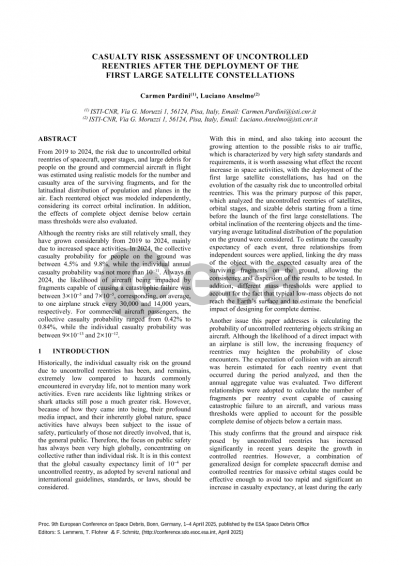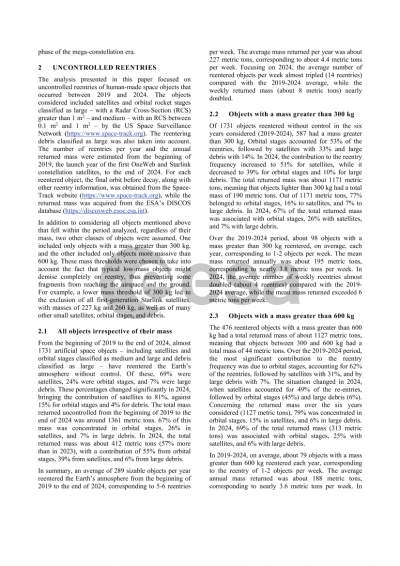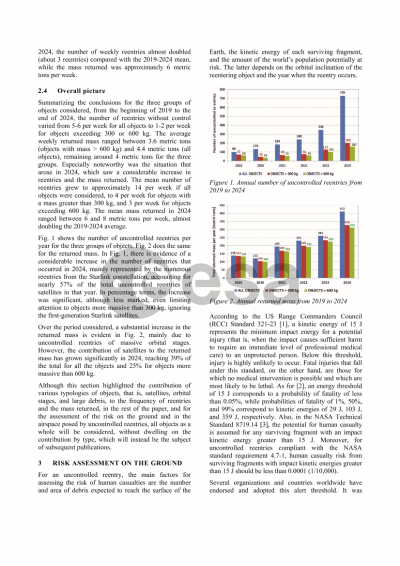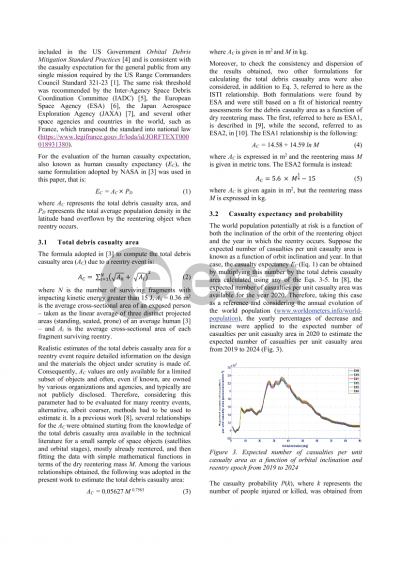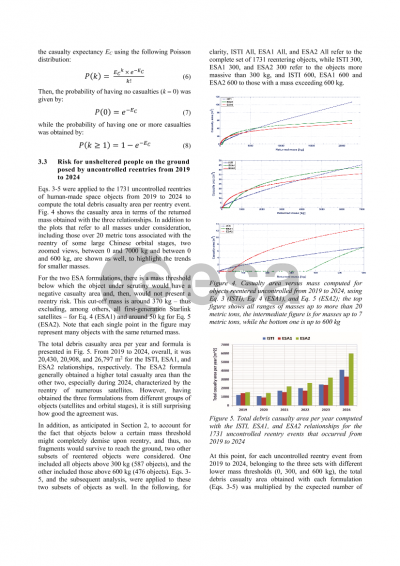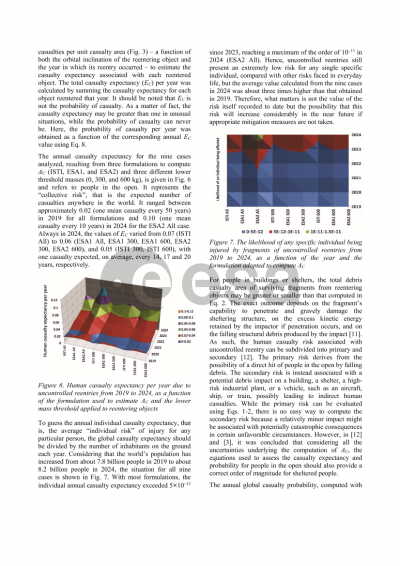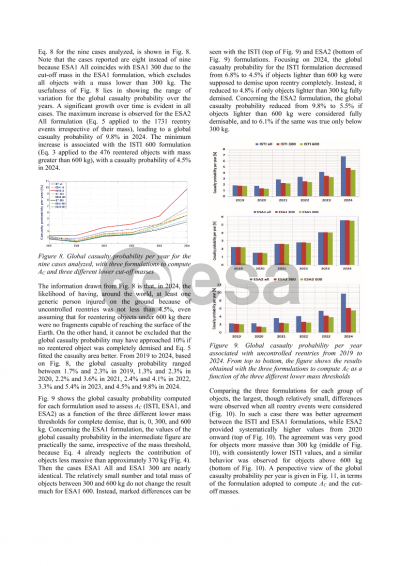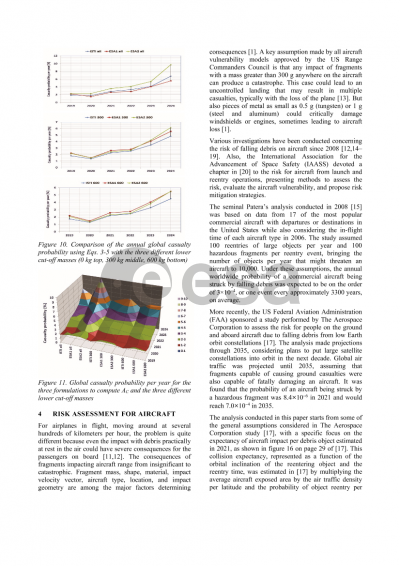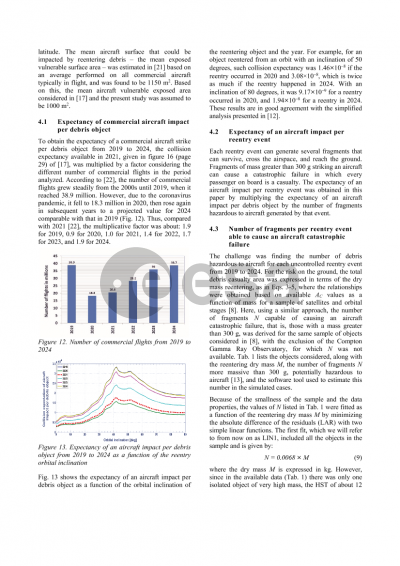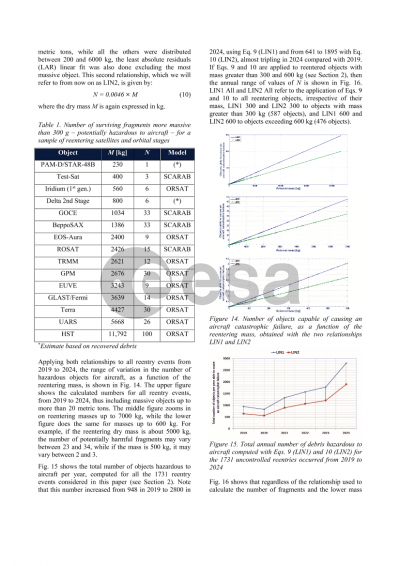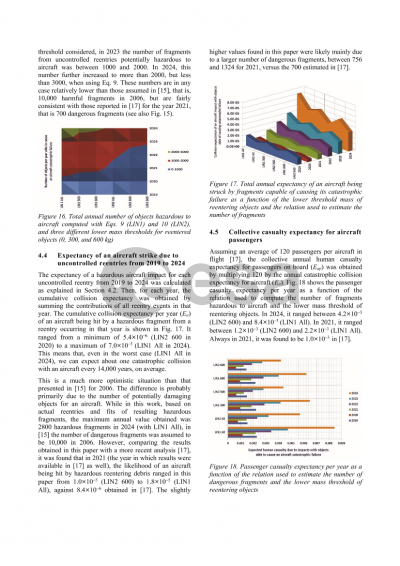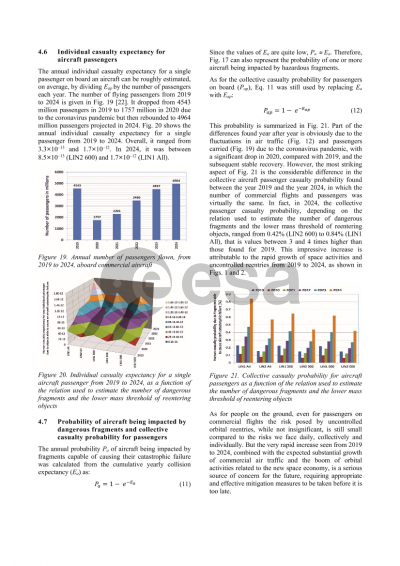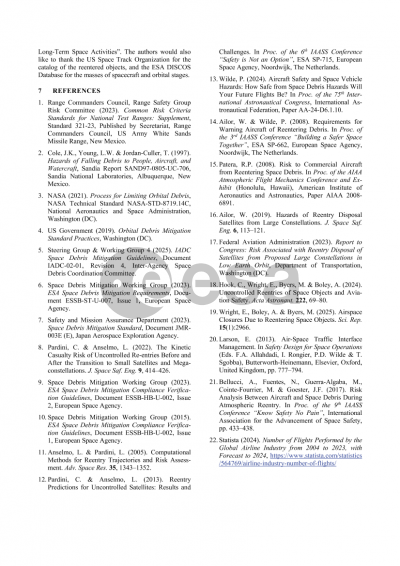Document details

Abstract
The individual casualty risk on the ground due to uncontrolled reentries has historically been, and still remains, extremely low compared to hazards commonly encountered in everyday life, not to mention many work activities. Even accidents considered rare, such as lightning strikes or shark attacks, still pose a much greater risk. However, because of the way they came into being, their profound media impact and their inherently global nature, space activities have always been subject to the issue of safety, particularly of those not directly involved, i.e. the general public. Therefore, the focus on public safety has always been very high globally, concentrating on collective rather than individual risk. It is in this context that the global casualty expectancy limit of 1/10000 per uncontrolled reentry event, as recommended or adopted by several national and international guidelines, standards or laws, should be considered.
With this in mind, and also taking into account the growing attention to the possible risks to air traffic, which is characterized by very high safety standards and requirements, it is worth assessing what effect the recent increase in space activities, with the deployment of the first large satellite constellations, has had on the evolution of the casualty risk due to uncontrolled orbital reentries. This was the main purpose of this paper, which analyzed the uncontrolled reentries of satellites, orbital stages and sizable debris starting from a time before the launch of the first large constellations. The orbital inclination of the reentering objects and the time-varying average latitudinal distribution of the population on the ground were considered. To estimate the casualty expectancy of each event, two relationships from independent sources were applied, linking the dry mass of the object with the expected casualty area of the surviving fragments on the ground, allowing the consistency and dispersion of the results to be tested. In addition, different mass thresholds were applied to account for the fact that typical low-mass objects do not reach the Earth’s surface and to estimate the beneficial impact of designing for complete demise.
The main conclusion of the study is that the global casualty expectancy is on the rise despite the growth of controlled reentries. However, a combination of generalized design for complete spacecraft demise and controlled reentries for massive orbital stages may be effective enough to avoid too rapid and significant an increase in casualty expectancy, at least during the initial phase of the mega-constellation era.
Preview
